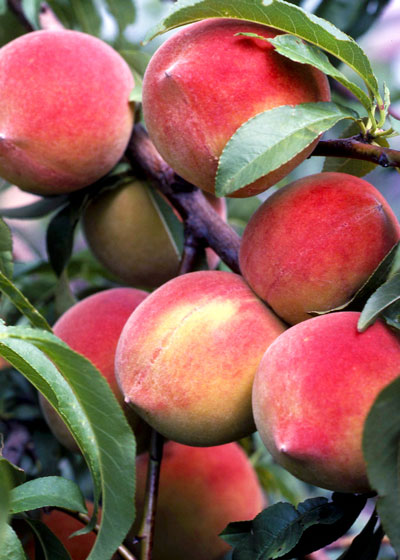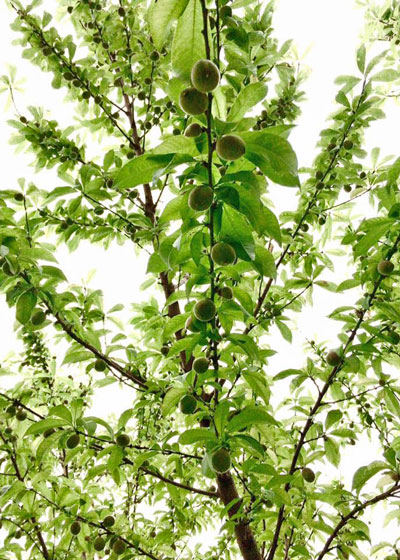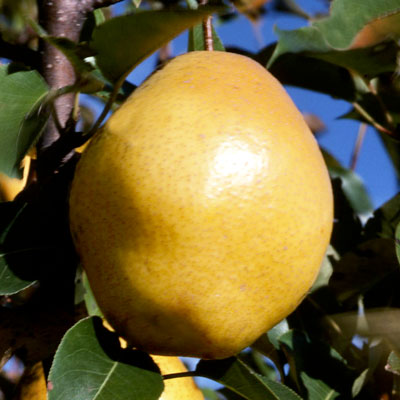Quick Little Garden Tip
You probably remember thinning out seedlings in the row of vegetables so the plants that remained would have room to grow and develop to full productivity. You didn’t like to waste the plants as a youngster, but your parent told you how critical it was to your vegetable crops’ success.
It’s the same with your fruit crops. If you leave every last fruit hanging on your trees and vines, final quality will undoubtedly suffer. In fact, so can the actual health of the plants themselves.

These peaches look compelling at first glance, but notice that they’re half the size of a leaf. You should be seeing only one peach in this photo.
Stark Brothers Nursery in Missouri, long known for their fine fruit trees sold via mailorder, has great information on this topic.
To boil the Stark Brothers Nursery information all down to what is applicable to Texas:
• Thin most fruit crops 3 or 4 weeks after prime bloom time for the crop.
• Use your fingers and small clippers to remove excess fruit.
• Do so to allow more water and nutrients to enter the fruit that remain, for higher quality and larger fruit.
• Thinning will take weight off the trees’ branches.
• Remaining fruit will be exposed to more sunlight for more attractive coloration and uniform ripening.
• Thinning helps ensure annual fruit production rather than biennial bearing.
• Peaches and apples require thinning to leave the fruit 6 inches apart on the branches. (Compare that to the photo of the peach branch shared with me by a Facebook friend.)

Without thinning, these young peaches would be so small that they’d be little larger than marbles.
• Plums and pears should be thinned to 4 to 6 inches between fruit.

These pears have been properly thinned, and large, high-quality fruit is the outcome.
• Grapes are thinned a great deal with your annual mid-winter trimming that removes as much as 80 to 85 percent of their cane growth.
Here is the entire story from the Stark Brothers website. Our thanks for their useful information.
(Note: Portions of this story ran in the April 7, 2016, e-gardens. I felt the topic merited covering again. Neil.)
